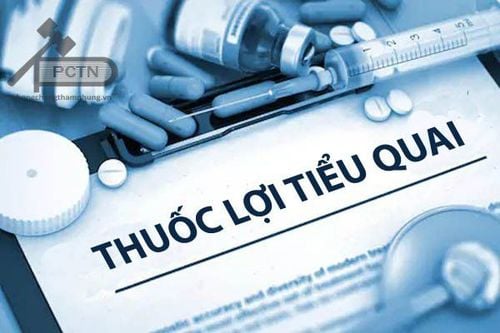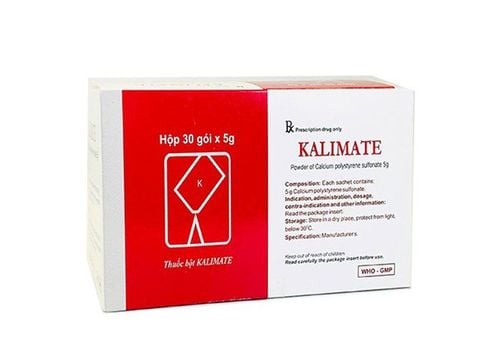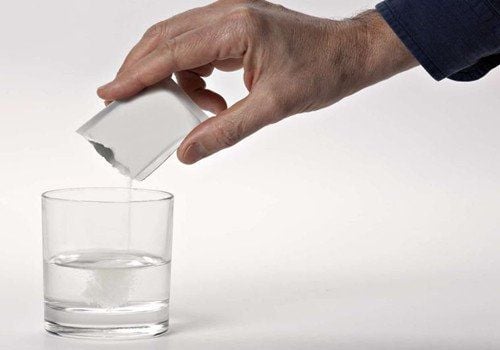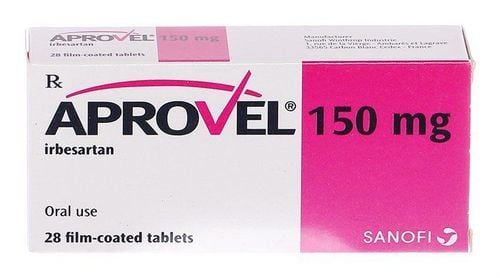This is an automatically translated article.
Potassium is an electrolyte that plays an important role in life, however, for various reasons, the serum potassium concentration does not remain within the acceptable range, it can be increased or decreased, causing the condition. blood potassium disorder. So how to correct dyskalemia effectively without causing side effects for the patient?
1. How is blood potassium disorder understood?
Potassium is a mineral with a high percentage in the human body, accounting for 80% in muscle cells and the remaining 20% in bones, liver and red blood cells. Potassium functions as an electrolyte and has an important role in vital bodily functions such as regulating fluid balance, nerve conduction, and muscle and heart regulation. In addition, adequate potassium supplementation for the body has many benefits such as reducing blood pressure, preventing the risk of stroke, preventing osteoporosis, kidney stones and reducing water retention in the body.Serum potassium concentration is maintained in the range of 3.5 - 5.2 mmol/l. Dyskalemia is understood as a change in the concentration of potassium in the blood. For some reason, the patient has muscle weakness, flaccid paralysis, and even high risk of cardiac arrest if not treated promptly.
Disorders of blood potassium including hyperkalemia and hypokalemia, which are assessed by testing serum potassium levels:
Normal blood potassium: 3.5 - 5 mmol/l Hyperkalemia when > 5.5 mmol/l Hypokalemia when < 3.5 mmol/l.

Bổ sung đầy đủ kali cho cơ thể giúp phòng chống nguy cơ đột quỵ
2.Causes of blood potassium disorder
There are many different causes of dyskalemia. For hypokalemia, rarely the cause comes from nutrition, because most foods contain potassium, so the loss of potassium in the body mostly comes from the gastrointestinal tract or urinary tract due to vomiting, diarrhea, dehydration, or prolonged use of laxatives.
Besides, injury due to accident, burn or surgical procedure is also the cause of hypokalemia due to the release of potassium by damaged cells. Certain medical conditions such as chronic kidney disease, hyperglycemia, cushing's syndrome, primary hyperaldosteronism, and severe hypomagnesaemia also cause hypokalemia. In addition, the use of diuretics, acid-base imbalance, prolonged intravenous fluids without potassium supplementation are also causes of hypokalemia.
For hyperkalemia, the main cause is the inability of the kidneys to excrete excess potassium from the body, to transport potassium from the inside of the cells to the outside due to acidosis, the use of drugs with a lot of potassium, or blood transfusions. in large quantities...
Regardless of the cause leading to hyperkalemia, hypokalemia, the first thing to correct the dyskalemia is to help the patient stabilize the situation and then proceed with treatment. causes them.

Hội chứng cushing có thể gây ra tình trạng hạ kali máu
3.Treatment of dyskalemia
3.1 Hyperkalemia Treatments for hyperkalemia include:
Using calcium chloride or calcium gluconate for the purpose of stabilizing cell membranes and protecting the heart, this drug is indicated for use when the patient has hyperkalemia. with electrocardiographic findings. The dose is 10 mmol Ca++ (1g CaCl) intravenously slowly from 5-10 minutes, the drug will take effect immediately after injection from 3-5 minutes, if after 5 minutes there is no effect, it can be repeated. Particular caution should be exercised when using this method in patients receiving cardiac glycosides. Transport of potassium into cells using insulin causes hypokalemia. This method is indicated for use in patients with severe or moderate hyperkalemia, by mixing 10 units of insulin in a glucose solution (25g glucose: 125ml 20% sugar) then intravenous infusion for 15-30 minute. Using insulin causes hypokalemia to work after 15 minutes of use, but it is necessary to pay attention to the risk of hypoglycemia in patients. In addition to the use of insulin to cause hypokalemia, aerosol salbutamol or lye can be used to transport potassium into the cells, however, when using nebulizer salbutamol should be used with caution in patients with heart disease. Remove potassium from the body using loop diuretics, ion exchange resins, or extrarenal dialysis. After initiating treatment, it is necessary to monitor the ECG continuously, check blood potassium at 1-2-4-6 hours from the start of treatment and aim to lower potassium < 6 mmol/l after 2 hours. Perform capillary blood sugar testing and treat the cause of the hyperkalemia.

Sử dụng thuốc lợi tiểu quai giúp đào thải kali ra khỏi cơ thể
3.2 Hypokalemia The main treatment for hypokalemia is the use of potassium chloride orally or intravenously. Depending on the patient's condition, the doctor will prescribe the most appropriate dose. After that, like hyperkalemia, the patient will be treated for the cause, and tested to correct the dyskalemia every day to avoid overcompensating for potassium leading to hyperkalemia or ineffective treatment. result from insufficient replacement of the required amount of potassium.
The cases of dyskalemia, whether raised or lowered, can cause mild to severe changes, affecting the health and life of the patient. Therefore, patients need to be detected early, adjusted by appropriate measures in a methodical manner and under the control of doctors to ensure patient safety.
Vinmec International General Hospital is one of the hospitals that not only ensures professional quality with a team of leading medical doctors, modern equipment and technology, but also stands out for its examination and consultation services. comprehensive and professional medical consultation and treatment; civilized, polite, safe and sterile medical examination and treatment space. Customers when choosing to perform tests here can be completely assured of the accuracy of test results. In addition, customers will be examined with a specialist to determine the risk of disease and have a scientific treatment direction.
Please dial HOTLINE for more information or register for an appointment HERE. Download MyVinmec app to make appointments faster and to manage your bookings easily.













